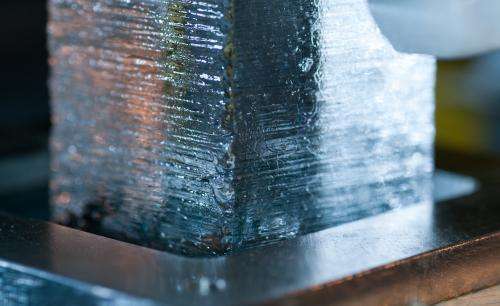A century of human impact on Arctic climate indicated by new models, historic aerosol data

The Arctic is the most rapidly warming region of the globe, but warming has not been uniform and the drivers behind this warming not fully understood even during the 20th century.
A new study authored by Canadian and American investigators and published in Scientific Reports, a primary research publication from the publishers of Nature, suggests that both anthropogenic and natural factors – specifically sulphate aerosols from industrial activity and volcanic emissions, in addition to greenhouse gas releases from fossil fuel burning – account for Arctic surface temperature variations from 1900 to the present.
Using new climate model simulations evaluated alongside the most recent surface temperature records and historical aerosol records contained in ice cores (collected and analyzed by an international team of researchers working at the Desert Research Institute in Reno, Nevada) the authors demonstrate that contributions from greenhouse gas and aerosol emissions, along with explosive volcanic eruptions, explain most of the observed variation in Arctic surface temperature over the last century.
"Unlike greenhouse gases, aerosols are short-lived in the atmosphere." said Joe McConnell, a research professor at the Desert Research Institute who oversees DRI's unique ultra-trace ice core analytical laboratory. "In order to understand their role in global climate you have to employ an array of sample sites and measurements. The records used in this study are part of a much larger array of historical aerosol records we are developing from ice cores collected from throughout the polar regions."
McConnell adds that this new study, resulting from collaboration between Canadian and American environmental researchers utilizing state-of-the-art climate models and ice core analytical techniques, demonstrates the importance of aerosols in climate forcing.
The authors attribute warming from 1900-1939 to rapidly rising black carbon emissions, diminishing influence of the Santa Maria volcanic eruption in 1902, and warming North Atlantic sea surface temperatures. Cooling from 1939 to 1970 is attributed to cooling from anthropogenic sulfate aerosol emissions the Agung volcanic eruption in 1963, and falling North Atlantic surface temperatures.
More recently, the authors attribute warming from 1970 to present to increased anthropogenic greenhouse gas emissions, with a smaller contribution from warming North Atlantic sea surface temperatures.
Understanding the causes of Arctic climate change during this period is critical, said McConnell, because of the associated environmental and economic impacts.
More information: The paper is titled "One hundred years of Arctic surface temperature variation due to anthropogenic influence".
Journal information: Scientific Reports
Provided by Desert Research Institute


















